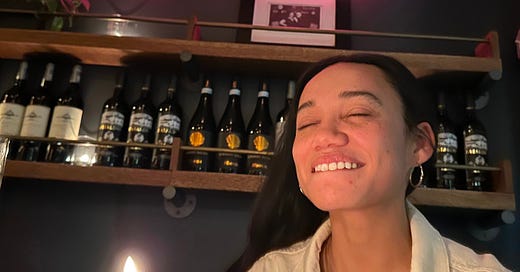Why your small Dunkin coffee now costs $7
Is it tariffs, corporate greed, or something else entirely?
My usual Starbucks drink—don’t @ me, I live over twenty minutes from the nearest indie roaster—has crept up to ~$7.50. And yet, I’ve still been going. Every. Single. Day. So, last week, I tried something new: a small iced cappuccino with an extra shot from Dunkin’.
It cost $7.
You can imagine my surprise. Or maybe you can’t if you live in New York or LA or somewhere else where pricing is already unhinged. But I live in a sleepy Hudson Valley village. A $7 chain-coffee small anything here feels cosmically incorrect. Especially when that same drink used to be $4.50 just last year…in Boston.
Naturally, I paid for my coffee and went home to complain about it on the internet.
I thought this was a clever little line about corporate greed until I ran it by my friend Amanda IRL. She just replied, “Are you sure it’s not tariffs? We don’t grow coffee here.” (She’s right—the U.S. imports nearly all of its coffee, mostly from Brazil, Colombia, and Vietnam.) And since she’s also a brilliant economics professor at West Point, she followed this up with an offer to walk me through a crash course on economics as it relates to food prices.
Turns out, the number to watch is something called the C price—basically, the going rate per pound of green coffee on the global commodities market. It swings with weather, labor, geopolitics, and, well, vibes. Last December coffee prices hit a nearly 50-year high due to a lower than expected crop production in Brazil.1 And just last month, Roaster Magazine reported new U.S. tariffs—10% to 46%—on beans from 15 of the world’s top 20 producers.2 (If you’re the receipts type, you can look this up yourself on the U.S. Harmonized Tariff Schedule—just be ready for a hot mess of government UX.)
But even if tariffs—or rising labor costs or poor weather conditions or supply chain shock—raise costs, that doesn’t automatically mean your drink will cost more. Companies have options. They can absorb costs. They can raise prices gradually. Or, as seems increasingly common, use economic headlines as cover. It’s not illegal. It’s just modern pricing strategy.
Public companies have to show quarterly growth. If you eavesdrop on earnings calls—they’re public—you’ll may hear phrases like “margin expansion” and “pricing power.” Translation: “We raised prices, and no one pushed back.”
Which is why Amanda always says: don’t just watch prices—watch profits. If revenues are climbing faster than input costs, chance are you’re not just paying for coffee, operations, etc. Rather companies are quietly positioning $7 as the new normal for a caffeine fix—banking on the fact that we’re all too tired to argue. Coffee is what economists call “elastic,” which is a fancy way of saying: we’ll keep drinking it, even if the price creeps up.
And it isn’t just coffee—eggs, produce, and hot girl milk prices are all inching up across the board.3 These hikes are often justified with phrases like “upgraded packaging,” “supply chain pressures,” or my personal favorite: “premiumization.” Sometimes it’s valid. Sometimes it’s opportunism. Most of us can’t tell the difference. We’ve internalized that “everything’s more expensive now” without asking why. And companies know that.
Amanda helped me calibrate my expectations. There’s rarely one neat answer—and with a privately held company like Dunkin’ you may never know. (In the case of my ~debatably~ overpriced iced cappuccino, it’s probably some combo of tariffs, droughts, and corporate decisions.) But next time you get hit with a $7 coffee—or a $9 carton of eggs or 2 for $3 limes—you’ll at least know what questions to start asking.
Takeout
(As a reminder, I use affiliate links which means I might make a small commission on any purchases!)
In other coffee news: Roasted Duck, Plums and Cheese: The Bizarre Brews Fueling China’s Coffee War and I drank coffee like Dan Campbell — and learned a little about caffeine and performance.
And if you’re also over paying $7 for your daily coffee fix, here are the at-home options I’m looking into: a buzzy new cold brew/iced coffee and espresso machine, a fail proof, classic setup, and instant espresso from the company determined to make it as good or better than an in-store latte.4 (This is a very chic pour over option too!)
Plus, the coffee set that makes my bedroom feel a luxury hotel.
Tchin tchin!
—VB





